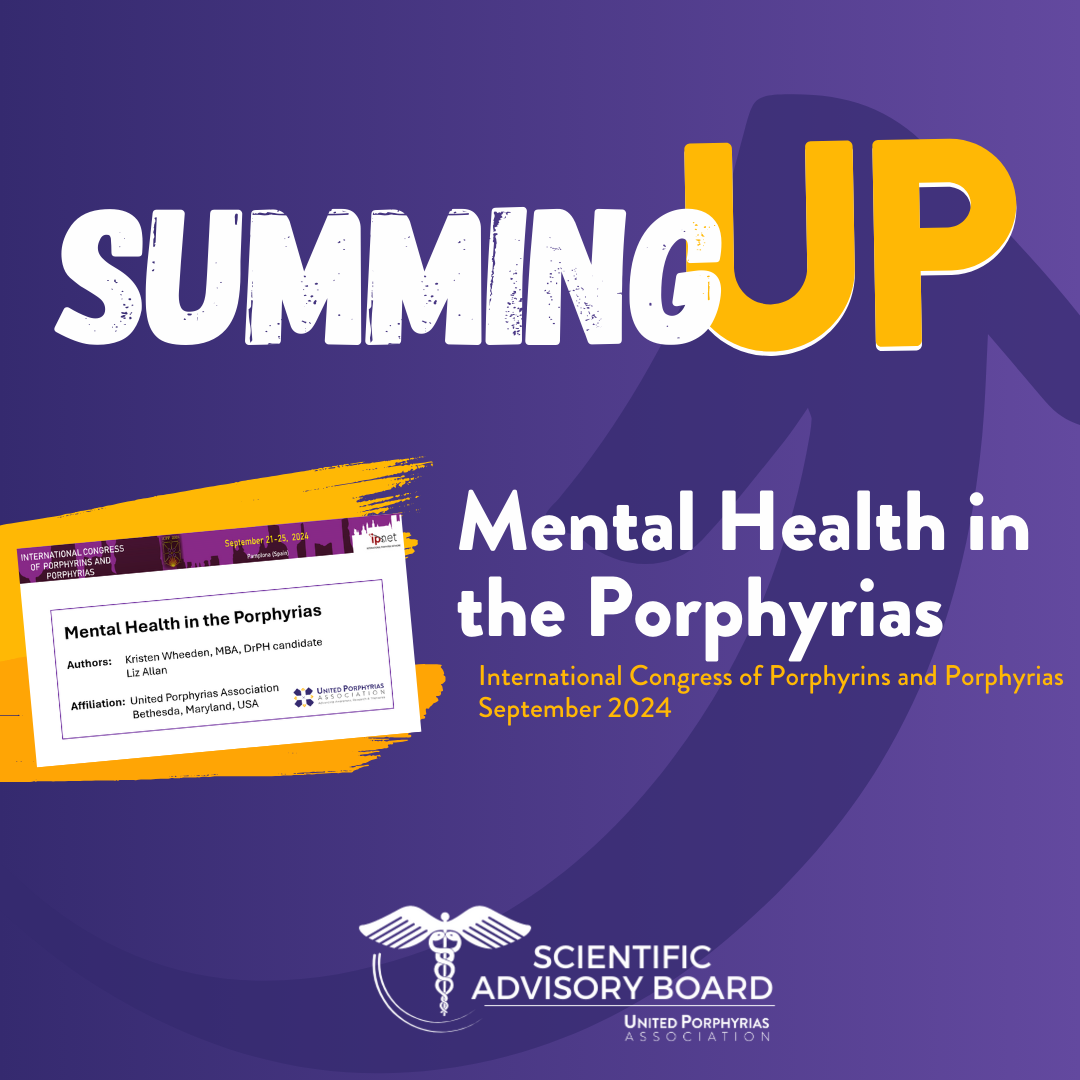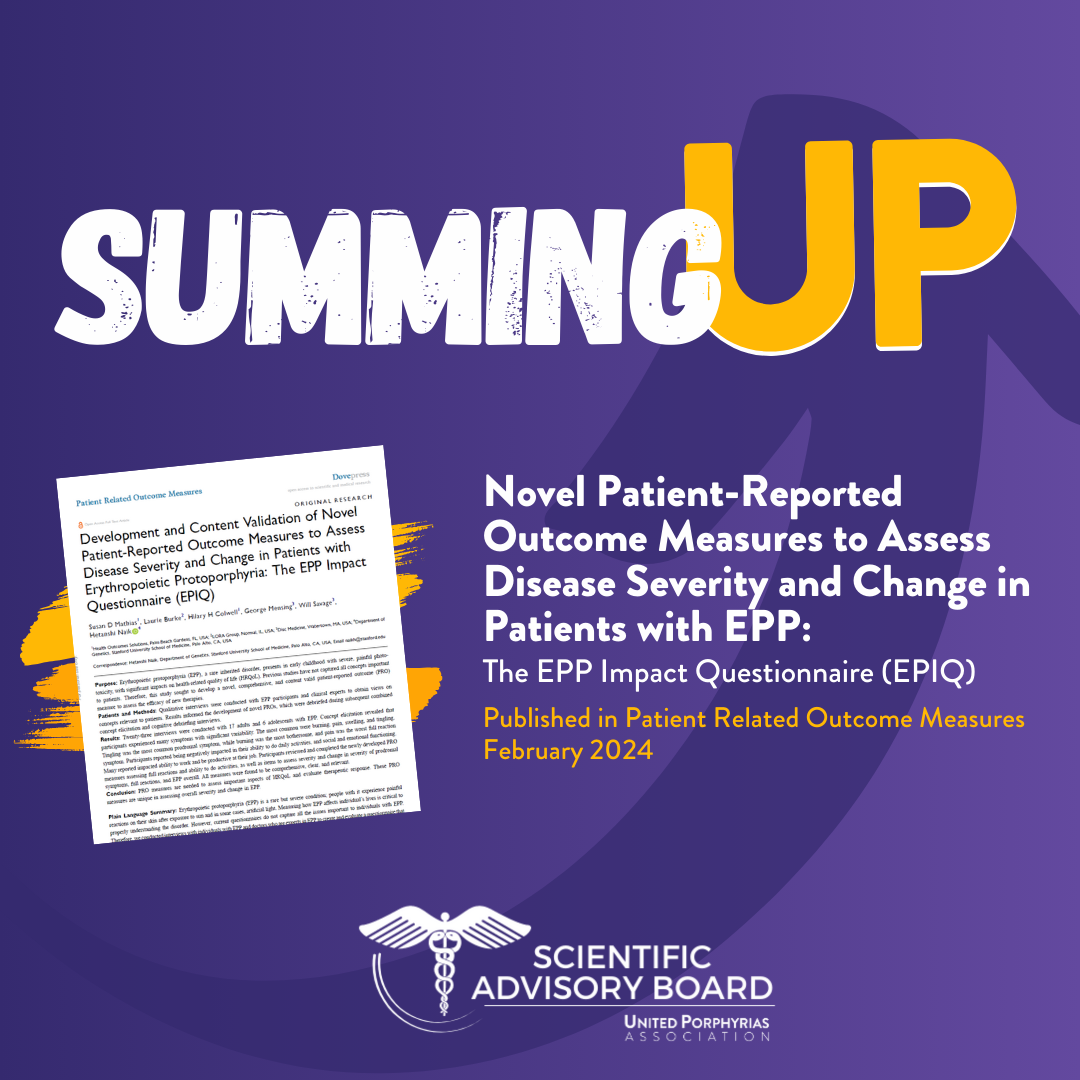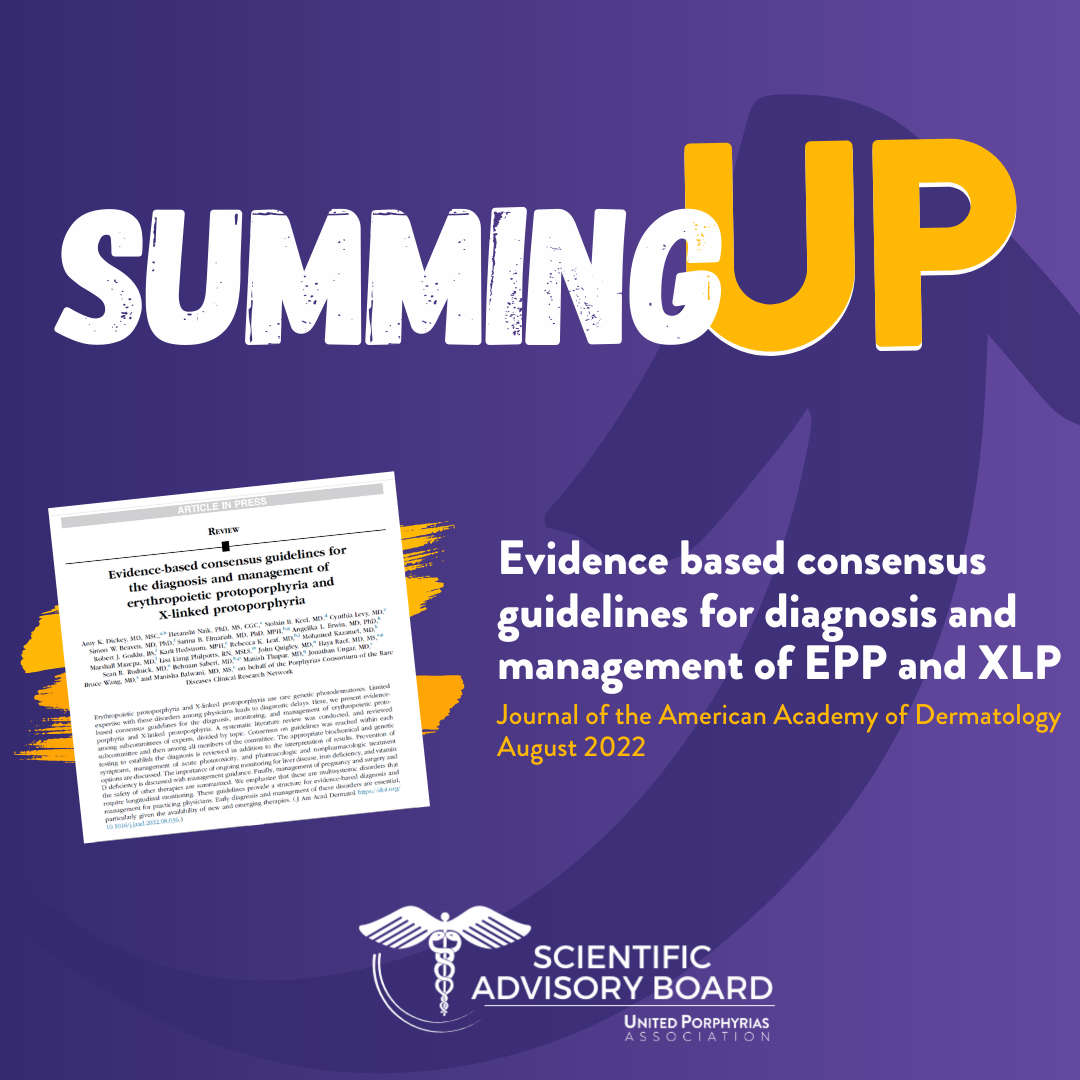Light-Related Skin Symptoms in EPP
Summing UP features the latest porphyria research in easy-to-understand summaries that have been reviewed and approved by the UPA's Scientific Advisory Board of porphyria experts.
Light-Related Cutaneous Symptoms of Erythropoietic Protoporphyria and Associations With Light Sensitivity Measurements
Published in JAMA Dermatology in January 2023
Original article: https://pubmed.ncbi.nlm.nih.gov/36630131/
This research explored the connection between light exposure and symptoms in 35 patients with Erythropoietic Protoporphyria (EPP).
What did the research involve?
For the study, participants were asked to report their skin color, frequency and characteristics of symptoms, and areas of the body that were most sensitive to light.
Participants who experienced EPP symptoms at least weekly wore something called a light dosimeter that measured their exposed light dose and completed a symptom survey daily for one month.
What did the research find?
The research findings provide a description of symptoms that have not previously been well-described in medical literature. Some of the key findings are:
All patients experience warning symptoms : All patients with EPP in the study had warning signs, called prodromal symptoms, before having a full blown EPP reaction. In the study, 66% of patients had prodromal symptoms within 30 minutes of sunlight exposure. Prodromal symptoms included tingling (97%), itchiness (66%), and mild pain (43%).
EPP symptoms include a priming effect: If a patient had recently had prodromal symptoms, it increased the risk of a severe EPP reaction. In the study, 30% of participants reported a severe reaction within 30 minutes, but this increased to 70% if they had prodromal symptoms the day before.
EPP symptoms aren’t limited just to the skin: The skin-related symptoms that EPP patients reported during a severe EPP reaction included pain, burning, itching, tingling, and increased sensitivity and pain to stimulus that isn’t normally painful (ex. pain when scratching). They also reported generalized symptoms, including generalized fatigue and achiness during a reaction.
Not everyone has visible symptoms: EPP reactions did not always have visible signs. The most common visible sign swelling, which was reported 83% of patients. Some patients (6%) reported never having visible symptoms, and 26% reported no lasting skin changes. Redness was only reported in 50% of EPP patients. Other visible sights were scarring, scabbing, dry skin, cracking skin and petechiae (small purple dots from burst blood vessels).
Hands, face, and feet are the most sensitive: Patients consistently reported the backs of their hands as being the most sensitive area of skin, followed by their face and feet. The shoulders;were least sensitive, suggesting that there may be something about the hands, face and feet that make them particularly sensitive.
Specific symptoms don’t indicate severity of a person’s disease: The people who could be in light the shortest amount of time didn’t have a consistent set of symptoms, visible or invisible, that were different from other EPP patients, and they did not necessarily have any visible symptoms at all. This means that it isn’t possible to gauge the severity of a patient’s EPP based on symptoms or by looking at the skin. A person’s EPP can be severe even if there is nothing visible.
In the words of the patients: EPP reactions
Feels like I’m covered with boiling oil and being poked with 1000 hot pins at the same time
Like someone is cutting me with knives while hot lava is being poured on
Like my body is broiling from the inside out
As if a magnifying glass is burning me over that area
Having thousands of needles in your skin with one side of the needle being freezing and the other side boiling
Conclusions and future research
This research provides insights into patients’ self-reported symptoms and experiences of EPP which may help doctors diagnose the condition more easily.
Additional research questions include the following:
What causes symptoms such as tingling, itching, pain from stimuli that is normally not painful, and general achiness and fatigue?
How do the symptoms described in EPP compare with other skin conditions?
Why are some areas of the body more sensitive than others?
What is the reason for the priming effect?
CONTENT REVIEWED BY UNITED PORPHYRIAS ASSOCIATION SCIENTIFIC ADVISORY BOARD






